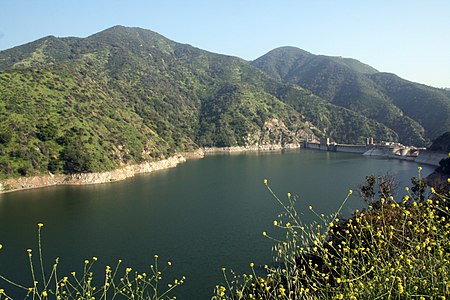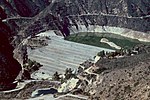Morris Reservoir
1935 establishments in California1940s establishments in California1990s disestablishments in CaliforniaAngeles National ForestAzusa, California ... and 10 more
Historic American Engineering Record in CaliforniaLos Angeles County, California geography stubsLos Angeles County Department of Public WorksMilitary installations in Los Angeles County, CaliforniaReservoirs in CaliforniaReservoirs in Los Angeles County, CaliforniaReservoirs in Southern CaliforniaSan Gabriel MountainsSan Gabriel River (California)Systems command installations of the United States Navy

Morris Reservoir is located in the San Gabriel Mountains, within the Angeles National Forest, in Los Angeles County, California. It is impounded by Morris Dam, which was completed in 1935. Morris Dam is a gravity dam rising 245 feet (75 m) above the San Gabriel River stream bed.
Excerpt from the Wikipedia article Morris Reservoir (License: CC BY-SA 3.0, Authors, Images).Morris Reservoir
San Gabriel Canyon Road,
Geographical coordinates (GPS) Address Nearby Places Show on map
Geographical coordinates (GPS)
| Latitude | Longitude |
|---|---|
| N 34.174166666667 ° | E -117.88027777778 ° |
Address
San Gabriel Canyon Road
San Gabriel Canyon Road
91742
California, United States
Open on Google Maps







